
Related
Guests
- Seymour HershPulitzer-Prize winning investigative reporter for The New Yorker magazine. His latest piece for their website’s “News Desk” blog is titled “Our Men in Iran?”
Journalist Seymour Hersh has revealed that the Bush administration secretly trained an Iranian opposition group on the State Department’s list of foreign terrorists. Hersh reports the U.S. Joint Special Operations Command trained operatives from Mujahideen-e-Khalq, or MEK, at a secret site in Nevada beginning in 2005. According to Hersh, MEK members were trained in intercepting communications, cryptography, weaponry and small unit tactics at the Nevada site up until President Obama took office. The MEK has been listed as a foreign terrorist groups since 1997 and is linked to a number of attacks, spanning from the murders of six U.S. citizens in the 1970s to the recent wave of assassinations targeting Iranian nuclear scientists. Hersh also discusses the role of Israeli intelligence and notes the Obama administration knew about the training, “because they have access to what was going on in the previous administration in this area in terms of the MEK, in terms of operations inside Iran.” His new report for The New Yorker blog, “Our Men in Iran?,” comes as nuclear talks are set to resume this week between Iran and the International Atomic Energy Agency. [includes rush transcript]
Transcript
AMY GOODMAN: In what appears to be a first for U.S. foreign policy, new revelations have emerged that the Bush administration secretly trained an Iranian opposition group despite its inclusion on the State Department’s list of foreign terrorists. Writing for The New Yorker magazine, Pulitzer Prize-winning journalist Seymour Hersh reports U.S. Joint Special Operations Command trained operatives from Mujahideen-e-Khalq, or MEK, at a secret site in Nevada beginning in 2005. According to Hersh, MEK members were trained in intercepting communications, cryptography, weaponry and small unit tactics at the Nevada site up until President Obama took office. The MEK has been included on the State Department’s list of foreign terrorist groups since 1997. It’s been linked to a number of attacks, spanning from the murders of six U.S. citizens in the ’70s to the recent wave of assassinations targeting Iranian nuclear scientists.
Although the revelation that the U.S. government directly trained the MEK comes as a surprise, it’s no secret the group has prominent backers across the political spectrum. Despite its designation as a “terrorist” organization by the State Department for 15 years, a number of prominent former U.S. officials have been paid to speak in support of the MEK. The bipartisan list includes two former CIA directors, James Woolsey and Porter Goss; former Homeland Security Secretary Tom Ridge; New York City Mayor Rudolph Giuliani; former Vermont Governor Howard Dean; former Attorney General Michael Mukasey; former FBI Director Louis Freeh; former U.N. Ambassador John Bolton; and former Pennsylvania Governor Ed Rendell.
Last month, Rendell and other unnamed officials were subpoenaed by the Treasury Department over their ties to MEK. Mukasey and Freeh have retained former Clinton administration Solicitor General Seth Waxman in response to the Treasury Department probe. Rendell, meanwhile, has shrugged off the scrutiny. Speaking at a public event in support of the MEK Friday in Washington, he told the crowd, quote, “I never knew obtaining a subpoena from your own government would be so much fun.”
Well, for more on the U.S. and its ties to the MEK, we’re joined by Seymour Hersh in Washington, D.C. His new piece for The New Yorker is called “Our Men in Iran?”
Welcome to Democracy Now!, Sy Hersh. Oh, and happy birthday.
SEYMOUR HERSH: Oh, yes, that’s right. It’s great to be older.
AMY GOODMAN: Well, we’ll focus on the wiser part. Tell us what you have learned. Who are, as you call it, “our men in Iran”?
SEYMOUR HERSH: They are as you said. The MEK—and by the way, once again, Amy, the piece was on The New Yorker blog, not in the magazine; it’s a shorter piece. But anyway, the point is, it went through the same sort of intense checking as anything in The New Yorker, of course.
Simply, they’re just the Khalq, the MEK. We began to—I learned about this many years ago. It’s just one of those things that it never quite occurred to me how important it was. And what is important about also the—they did stop, there’s no question, this sort of training that was going on. It was going on at a place called the Nevada Nuclear Security or National Security Test Site. It’s a former site for World War—post-World War II nuclear testing of weapons, testing of nuclear weapons. And it’s off-limits to people. And it’s—there’s an air base there. God knows what went on there. My own guess is rendition flights also flew into that air base in '02, ’03. There's some evidence for it. But certainly, the groups of MEK were flown in secretly by, I presume, the Joint Special Operations Command. This is this new high-powered group that’s been doing all the night raids in Afghanistan, that also came up in your news broadcast.
What’s important to me about it is not only that it did end, this kind of direct training of this group that is, as you said, a terrorist group; it’s also very clear that the United States is still involved, as is Israel and as was, for many years, England, in using the MEK and other dissident groups inside Iran as surrogates for the continued pressure we’re putting covertly on inside of Iran. And that is, as you said, there are assassinations done by the MEK. And let me make it clear, the MEK has been in a virtual war with the mullahs in Iran since the fall of the Shah, and you don’t have to—you don’t have to urge them to kill anybody. They’re very eager to do it themselves inside that country. But still, nonetheless, we provide intelligence. We, the Americans, have continued to provide intelligence and other kinds of material support for the MEK. Don’t forget, they speak Farsi, which is a great asset to us. These are people who are able to translate intercepted communications inside Iran for us very quickly and very—with great skill. And so, we have a lot of reason to rely on them, as we rely on other dissident groups inside Iran—the Kurds, the Azeris and others—to cause—basically, to try and keep some sort of internal chaos and mayhem going inside the country.
AMY GOODMAN: Is it believed the MEK were involved in the assassinations of the Iranian nuclear scientists?
SEYMOUR HERSH: Well, nobody has a video of it, but that seems clear that one of their goals, obviously, is to prevent the Iranians from developing nuclear weapons. And it’s not clear who they’re really assassinating, whether they’re—I know they’re—at one time, my government—I wrote about this in The New Yorker many years ago, in '05 or ’06. We've been actively involved, beginning in the Cheney-Bush days, of encouraging insurrection inside Iran—whether it’s aimed at regime change or not isn’t clear; I doubt that—but basically, blowing up things, etc. We did have a list at one time we created here in Washington of people we’d like to see gone, captured perhaps, turned over or turned into our agents, you know, double agents inside Iran. We tried to do that, too. But certainly, the Israelis are pawing the ground as if they are directly responsible or deeply involved with the MEK in the recent assassination of a 32-year-old scientist whose role in terms of—there’s not much evidence he was involved in making weapons, because there’s no evidence that Iranians are making weapons.
AMY GOODMAN: Can you talk about the bombs that were used in the assassinations?
SEYMOUR HERSH: Well, they’re most interesting bombs. They’re limpet bombs, Marine limpet bombs. They’re designed—they have a special charge, and they’re designed to go inside. They blow inside. And they’re, of course, of great use by the Navy SEALs. And the Navy SEALs, if you’re going to do an underwater demolition, if you’re going to blow up a ship from underwater, which as the SEALs traditionally were trained to do—most of them are involved in day-to-day combat in Afghanistan, etc., and much different from their initial role of underwater stuff. But if you want to blow up something underwater, you have to have a charge that explodes inward to cause water to rush in, etc. And these kind of very sophisticated charges have been used by the MEK in the assassinations.
And the reason we know it is that the car that was hit, for example, in January in Tehran that killed the young scientist, or the nuclear physicist or whatever he was, exploded inward. You can argue this is also good because it avoids non-combatant deaths. You know, you don’t want to kill a lot of people other than the one you’re trying to kill. It is also useful because you make sure anybody in that car gets it, because it does blow inside. It’s a very sophisticated shape charge. And there’s no question that some of the best mines in the Navy mine-making business were—some of that information was obviously passed on, whether directly to the MEK or through Israeli assets, or explicitly how. But it’s not an accident that these kinds of sophisticated weapons can be traced to the Navy SEALs, who are a major element of the Joint Special Operations Command.
AMY GOODMAN: Interestingly, you end your piece by quoting Defense Secretary Leon Panetta at Fort Bliss in Texas acknowledging the U.S. has some ideas as to who might have been involved, but we don’t know exactly who was involved, you know, being questioned about—this was the day after—a few days after the assassination of the Iranian nuclear scientists. He said, “I can tell you one thing: the [United States] was not involved in that kind of effort. That’s not what the United States does.”
SEYMOUR HERSH: Well, I think that’s technically correct. I don’t think there’s any other way to read that comment as—the use of that last graph as an ironic statement, perhaps. I think it’s correct that—also, it’s to my knowledge—this isn’t in the piece, because only one particular source about it, but I do understand that we really don’t know what’s going to happen 'til after it happens, and then we are put on notice. We do get notice that something has happened before it's released to the public. We have that kind of communication, essentially through Israel. Israel is obviously a little closer to everything that’s going on than we are. But we’re certainly—we’re not picking targets. I doubt that now. At least I don’t have any evidence we are. But we’re providing general intelligence.
And it’s not an accident that the first units of the MEK to show up in Nevada, late '04, early ’05—and it was months and months of training. It's not—the first word used by two different people about it was “commo,” communications, and “crypto.” The point is that—there was a story in the Washington Post just the other day here describing how America has been using drones to overfly Iran for at least three years. I would argue that, long before that, we’ve been using American satellites flying high that can’t be detected. And obviously, you can uplink and downlink communications to satellites. You can—if you’re on the ground and you find out something very useful tactically—by training the MEK in communications and how to use encrypt communications, you’re also enabling them to become an asset on the ground for us.
There was a period, I would say, in the Bush administration—I also think it stopped under Obama—when our boys, our Joint Special Operations Command guys, were directly inside Iran. We came in through Herat in Afghanistan. We also—that was one of—what we call a rat line. There are other rat lines through Balochistan in Pakistan, and etc. There are ways to get inside Iran clandestinely that we’ve been using for at least since, I’d say, late '04 until probably right before Obama got in. So we were there—look, it's been a huge, big internal game designed to destabilize.
And as somebody said to me in one of the pieces, one of the quotes in the pieces, “We’re not necessarily looking for Einsteins.” That suggests to me that the scientists who are really the most deeply involved in the enrichment. And by the way, let me say again, there is no evidence that our intelligence community or even the Israeli intelligence community has—and I know that firsthand—suggesting that there’s an ongoing bomb program. So we are now—the United States is now in the position of increasing sanctions and pressuring all sorts of economic pressure on the Iranians to stop—the whole purpose of the economic sanctions is to stop the Iranians from making a bomb that we know they’re not making. Once again, I don’t know how we get into this convoluted position. And then, as readers of the major newspapers know, we are now also entering new talks with Iran with new preconditions, and basically telling them that they must stop doing enriching, what they are legally entitled to do as members of the Non-Proliferation Treaty. Iran may be secretly wanting a bomb, and they may have that passion, and they maybe, you know, dream about it at night, but we haven’t a shred of evidence that they’ve done anything, concretely, physically, to create a facility for making a weapon.
AMY GOODMAN: We’re talking to Seymour Hersh. We’re going to come back to him in 30 seconds, the Pulitzer Prize-winning journalist who has written a piece for The New Yorker online called “Our Men in Iran?” Stay with us.
[break]
AMY GOODMAN: We’re talking to Pulitzer Prize-winning journalist Seymour Hersh. His latest piece is online at The New Yorker magazine’s “News Desk” blog; it’s called “Our Men in Iran?” And it tells the story of a group still designated as terrorist by the State Department, the MEK, which was trained at the Department of Energy’s Nevada National Site, with its arid high plains and remote mountain peaks, has a look of northwest Iran. Sy Hersh, why the Department of Energy? And again, this is under the Bush administration. They’re labeled terrorists, but they are training them, not only in communications, you point out.
SEYMOUR HERSH: They’ve had—there is a secret site. It’s about 60-some-odd miles out of Las Vegas, deep in no-man’s land in southern Nevada, where we’ve been doing an awful lot of stuff for many years. There’s a—it’s called “Site 12.” That particular site, it’s—our CIA and other agencies have been training foreign troops. It’s where, I would guess, when we do joint training with the special units of the Israeli army and other units that we train, we do train foreign soldiers. We can fly to this base. It’s got a long landing strip, 7,500 feet, concrete landing strip. And for a long time it had yellow crosses on it, which meant, for even aircraft, commercial aircraft, in trouble, do not land here. And this is a strip that you come in and you—I presume, you come in in a military plane. You can turn off the transponder. Nobody—no FAA is checking anything. Nobody is going to get a tail number. You can land. And there’s a facility there. There’s barracks and other work, other facilities, in Site 12 for—and a food hall. It’s all—you could actually find it online if you go through the Department of Energy’s annual—they provide annual environmental impact reports, and they describe what’s going on in each site in terms of the environment. And there you get a pretty good description. In fact, they actually use the word—there’s a training facility used for other government agencies. An ”OGA,” other government agencies, is a longstanding phrase that means the CIA, essentially—actually specifically to people on the inside. So there’s been training there forever.
And it just so happens, if you take a look at northwest Iran and take a look at the topography in that part of the desert in Nevada, it’s a very arid area, I think 15 inches of rain, or something like that, a year. It’s got a desert. It’s got valleys. It’s got mountain ranges. And it really is similar. I’ll tell you what the most frightening thing was. When they first began the training, one very senior four-star officer was called by somebody who knew about the training in Nevada, very worried about it, and because the Joint Special Operations Command people were training in—not only in communications and cryptography, small unit tactics, but other cute things, which, to me, of course, and to my friend, meant interrogation tactics, you know, how to—you know, I don’t know this, but I presume included the standard sort of horrible stuff that we know American intelligence agencies have and CIA and other personnel have done to various prisoners of war since 9/11, waterboarding and the like. It was very troubling, that message, that this kind of training is being done on a group that’s listed as a terrorist group.
AMY GOODMAN: Meanwhile—
SEYMOUR HERSH: But so it goes. They—
AMY GOODMAN: And yet, so many public officials, Bush and Republican and Democrats, are calling for them to be taken off the list. Among the U.S. officials to speak in support of MEK is former Vermont Governor Howard Dean. Speaking to CNN last year, he said the U.S. should lift the terror group designation to help protect MEK members living in Iraq.
HOWARD DEAN: The FBI screened all these people. The FBI counterterrorist folks screened all these people in 2006. Not one of them is a terrorist, according to our FBI. This is outrageous, what’s going on. It’s an outrageous behavior by the State Department. And frankly, the administration has direct responsibility for making sure that the promises were kept. We kept one promise. That is, we kept George Bush’s promise to get out by the end of 2011. We need to keep the promise of the people at Ashraf. We ought not to be complicit in human rights massacres.
AMY GOODMAN: Among those appearing at the public event in Washington on Friday in support of the MEK was Michael—was Mitchell Reiss, a former policy—a foreign policy adviser to Republican presidential candidate Mitt Romney. He acknowledged to the crowd that the Treasury Department considers MEK supporters, quote, “potential criminals.” At a campaign stop in New Hampshire last year, an audience member asked Romney about Reiss’s support for the MEK.
AUDIENCE MEMBER: Have you heard of or do you support the MEK, the People’s Mujahideen of Iran?
MITT ROMNEY: I have not heard about the MEK, and I—so I can’t possibly tell you whether I support the MEK. But I can—all right? But what is—what is the MEK? Why would you think that I supported it? Because you said it’s a terrorist group?
AUDIENCE MEMBER: There’s been—there’s a terrorist group in Iran which is variably violent. It’s attacked civilians before. It’s called the MEK, the People’s Mujahideen of Iran. And if you look into it, some of your staff members, I believe, have made statements to lobby the executive branch to remove them from the terrorist list.
MITT ROMNEY: I’ll take a look at the issue. I’m not familiar with that particular group or that effort on the part of any of my team.
AMY GOODMAN: That was Mitt Romney being questioned about his foreign policy adviser Mitchell Reiss’s support for the MEK. Seymour Hersh, your response?
SEYMOUR HERSH: Well, I would say that the Obama administration has even more trouble than Mr. Romney does. It’s clear he didn’t know much about it. This administration knows an awful lot about it, because they have access to what was going on in the previous administration in this area in terms of the MEK, in terms of operations inside Iran, and they’re still going on. And so, the question then becomes—I’m amazed that we’ve had nothing from the White House about this story. And there’s also been sort of a—I shouldn’t complain about it, because I understand it. You know, it’s “not invented here” syndrome. But I’m a little amazed that more reporters aren’t asking more questions about this, because it seems to be so egregious. This is—right now, our Treasury Department is actually asking questions, because no matter how you cut it, it’s a terrorist group, and if you’re aiding and supporting a terrorist group, under the law of the United States—as you know, there’s been some prosecutions in this area of people of Middle East descent supporting groups that we consider to be terrorists, and they get put away in jail. There certainly seems to be a double standard here at work. And yeah, Romney seems lost in space on this issue, but I can assure you right now, there are people in this White House who are not.
AMY GOODMAN: Is the Obama administration still training MEK?
SEYMOUR HERSH: I don’t think the word is “training” anymore, because are we directly training them down in Nevada? No, I don’t—there’s no reason to believe that. I don’t know that. I’ve been told that there is more stuff going on than we know of, of course, and that’s also possible. You know, one of the things that I’ve learned—I’ve been doing a book about Cheney for a number of years. It’s just amazing how many things we really don’t know about what our government can do. There are amazing things out there that happened that we just don’t know about. And so, they can keep secrets. Of course the government would like to keep pressure on Iran as much as it can. And I don’t think we can totally walk away from responsibility in terms of—at the minimum, we’ve been providing intelligence that we know goes to the MEK and also to other dissident groups inside, inside Iran. Does that mean we’re aiding and abetting in the specific killing of somebody? No, I have no reason to believe that anybody can make that case. But what the hell are we doing in there? Why are we putting so much pressure? Why do we take so much pleasure in bombings and explosions that take place inside Iran, which may be linked to us? And I just don’t quite understand the policy. It’s certainly not one that’s conducive to having good negotiations in good faith.
AMY GOODMAN: The latest news that nuclear talks in Turkey are taking place—talk about how the International Atomic Energy Agency, the IAEA, has found—what they have found in relation to the nuclear program and also Mohamed ElBaradei. In a minute, we’re going to be speaking to Sharif Abdel Kouddous. Mohamed ElBaradei, who was the Nobel Prize-winning head of the IAEA, was going to run for president of Egypt, then pulled out. But what he had to do with information that came from the MEK?
SEYMOUR HERSH: Well, very early, the MEK was the first group to announce that the—that they had discovered—in 2002, they had a news conference. And by the way, at that point, they were considered—the MEK were always considered a cult group, very fringe, marginal, irrational group. They had been involved in the '70s, so we believe, in the killing of some Americans inside Iran. And they were a Marxist, leftist group in opposition to the Shah that couldn't connect with the mullahs, the religious mullahs that took over, Khomeini in those days. They couldn’t connect with them, and they began a protracted struggle in which murder, murder, murder was all over the place, both sides killing each other, very brutal stuff. And so they were always considered to be outside the normal realm of groups.
And suddenly in 2002, they get a lot of street cred, credibility, because they announce that they, the Iranians, are building a nuclear facility. They didn’t say they were enriching uranium there, but it was clear, from the import of what they said, the only reason they’re getting involved in building a facility for nuclear production was for weaponization. And I learned—I was told at the time that Israel was behind that intelligence, that it really didn’t come from the MEK themselves. Israel, as you know—there are what, something like a million-and-a-half Iranian Jews, many of whom fled the country when the Shah fell. And Israel still has a pretty good net of—intelligence net inside Iran, so it wasn’t illogical.
And I began to see Mr. ElBaradei, the director general of the IAEA, pretty regularly, certainly at least once a year, and talked to a lot of people there in Vienna about what was going on in terms of nuclear development around the world. And this is a wise man. We didn’t like him because he’s Egyptian, but that was a big mistake. He turned out to be—he was enraged at Iran when I first began to talk to him about it. He thought they cheated. He was quite angry. But he also told me—I told him—we talked about the fact that I had heard that the Israelis were involved in providing that intelligence, and he also had heard the same thing. And in fact, before this article was published online for The New Yorker, the fact checkers went back to his office to his secretary and once again reminded him of that conversation and got his permission to say something he wouldn’t let me say earlier, which is that he had provided me with that information, too.
So Israel has had a tremendous role in supporting the MEK. I wouldn’t be surprised if Israel was also deeply involved in helping us or abetting with the training inside—in Nevada. That would make a lot of sense. And Israel certainly is a key player right now in the MEK activities, along with us, and for many years along with the Brits, who were also involved in providing signals intelligence inside Iran or collecting intelligence. The good thing about having Britain around is they’re actually more hated than we are in the Middle East because of their long history of exploitation. That’s always a plus.
But having said that, Baradei’s been—he’s been a very neutral arbiter of what was going on, very critical of Iran for many years. He eventually turned—his position turned, as he learned more, as the Iranians trusted him more, began to talk more to him and his people. And what we now have is—he left a few years back—we have a new director general, a Japanese sort of center-right politician named Amano, who is different. He’s much closer to us. There’s been WikiLeak cables released by Julian Assange that show very clearly that we helped him get elected as director general. There was a—it’s a U.N. agency, the International Atomic Energy Agency in Vienna, that ElBaradei headed for so many years. It’s U.N. And the new leader was voted—I think there were seven ballots, and it was our ability to swing some votes that got Amano the job, and he immediately told us how he would be different about Iran, etc. There’s a whole series of WikiLeaks cables about this that Julian’s group released that are pretty devastating, that aren’t enough in the American currency. They’re there. They were published widely in the British press, but not here. We really need to take a look at this relationship, because it raises a lot of questions just about—I’ll be honest: I’m not sure we come into negotiations with very clean hands on this. And we begin negotiations really behind the eight ball with the Iranians, because they are very deeply involved. They have very good intelligence. They know what we’ve been doing. Despite all this talk you have about Iranians being involved inside Afghanistan right now and all this talk about Iranians being involved inside Iraq and killing Americans, there’s never been much of a case for that.
And I will tell you right now, after 9/11, the Iranians were absolutely willing to work with us, particularly against al-Qaeda. Don’t forget, Iran is Shia, and al-Qaeda are mostly Sunni, Sunni fanatics, and there was no love lost. And they actually, in the first few—six months or so after 9/11, they closed their borders and captured a lot of al-Qaeda that were being driven out of the country by us, and they were looking for refuge in Iran, and they’ve been jailed. I think they’re still there in jail, over a hundred of them. And so, we really blew a chance by putting them on the Axis of Evil. I’d sure like to do a takeover of American history after 9/11. I think the history books are going to be—as bad as we think it is, it’s worse.
AMY GOODMAN: Seymour Hersh, I want to thank you very much for being with us, Pulitzer Prize-winning journalist for The New Yorker. His latest piece is online at their “News Desk” blog; it’s called “Our Men in Iran?”
When we come back, another prize-winning journalist. We’ll be joined by our very own Democracy Now! correspondent Sharif Abdel Kouddous. He has just flown in from Cairo. He’s heading up to Ithaca College this evening to give a major address as he receives the Izzy Award from the Park Center for Independent Media, named for the muckraking journalist I.F. Stone. This is Democracy Now! Back in a minute.

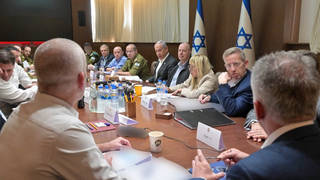

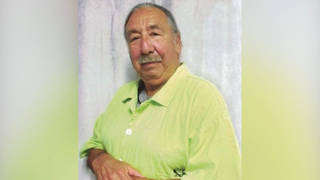
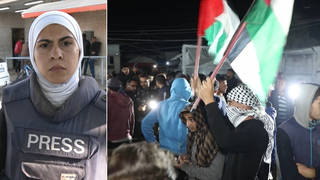
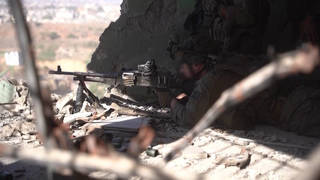





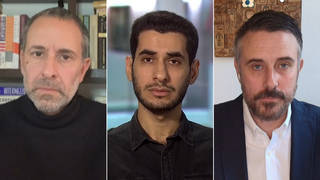
Media Options